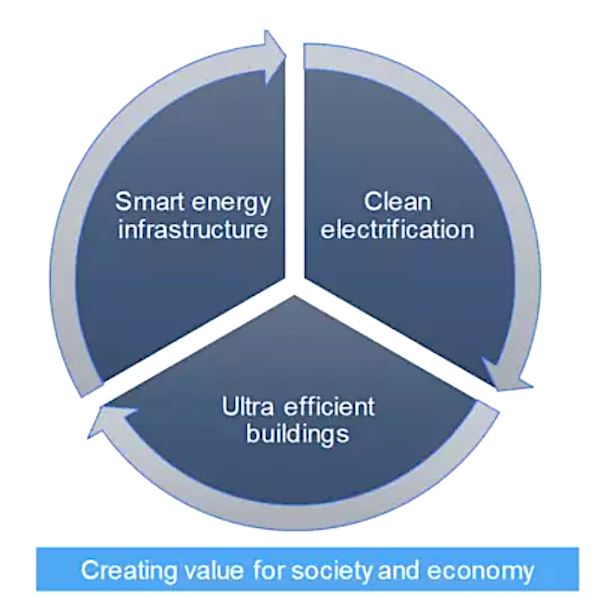Decarbonising cities: How to harmonise buildings, mobility and infrastructure
January 20, 2021
Why is it so important to decarbonise cities?
Cities represent humanity’s greatest achievements—and greatest challenges. From inequality to air pollution, poorly designed cities are feeling the strain as 68 per cent of humanity is predicted to live in urban areas by 2050.
The cities in which more than half of us live account for nearly two-thirds of the carbon dioxide (CO2) emissions that lie at the root of our planet’s looming climate crisis. Skyscrapers in megalopolises, shopping malls, SUVs in the streets, air conditioners in a growing number of places throughout the globe—all these consume a vast amount of high CO2-content energy.
How can we do it?
This can be done by taking an integrated approach: leveraging clean electrification and digital technology to harmonise urban energy systems while also thinking beyond individual projects to consider their impact within the surrounding communities and the built environment.
In fact, urban energy, transport and building infrastructures are gradually becoming Greener. There are more electric vehicles on city streets, better water treatment and recycling schemes, and more solar panels on rooftops around the globe.
According to International Energy Agency estimates, renewables like solar and wind are set to become the largest source of electricity generation worldwide by 2025, supplying one-third of the world’s electricity and ending coal’s decades-long dominance of the global power mix.
But with climate change accelerating, we need more comprehensive decarbonisation actions on three fronts.
- First, we need even more energy to come from renewable sources.
- Second, we need more cars, heating and other activity to be powered by clean electricity.
- Third, we need everything from factories to office buildings, homes, transport systems and consumer devices to become more energy-efficient.
Technologies make buildings more energy-efficient, by automatically adapting the amount of cooling, heating or lighting to occupancy levels at any given moment. Digital tools allow operators of manufacturing sites to run their operations or distribution systems more efficiently and even remotely, rather than in person (a feature that has proved critical in these times of social distancing and lockdowns). Excess power generated by an office building’s or warehouse’s rooftop solar panels might be used to help power the wider neighbourhood.

Image: World Economic Forum
The technologies, digital tools and data analytics capabilities to enable this efficient urban system already exist, as do concrete examples of such an integrated approach. Therefore, integration and collaboration of systems and stakeholders are the fundamental drivers to accelerate and scale the transition in cities.
City- and state-level administration can enable and facilitate such collaboration through public-private cooperation. The public sector can drive on governance, policy and licensing, while the private sector provides agility, technology and resources. This cooperation can share and balance risks and liability between stakeholders for mutual gains and value creation for the broader community.
All of this comes against a backdrop of great urgency.
Epidemics, climate and economic pain have all created unique challenges in 2020. But combating climate change must remain top of mind. Cities lie at the heart of this fight and have now the chance to build back better. It is up to all of us to ensure we become part of the solution rather than part of the problem.
The above is an excerpt. Read the full report here.
To read the complete article, get your hardcopy at our online shop/newsstands/major bookstores; subscribe to FuturArc or download the FuturArc App to read the issues.
Previously Published Commentary, Online Exclusive Feature
Contact us at https://www.futurarc.com/contact-us for older commentaries.

